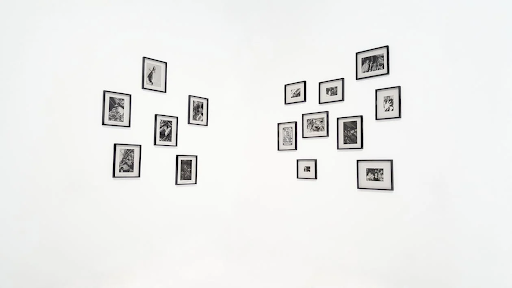Creating a gallery wall can transform any room into a stunning focal point, adding personality, depth, and creativity to your space. But pulling off a gallery wall that feels cohesive and curated requires a bit of planning. Here are six essential tips to help you design a beautiful gallery wall that reflects your style.
Add Personal Touches
Incorporate pieces that resonate with you whether they’re photos, art prints, or objects that hold sentimental value. This could be anything from family photos to art from local artists or pieces collected during your travels. To add a personal touch, picture frames in the UK can be customized with unique matting, engravings, or bespoke sizes to perfectly suit your style and space. These touches make your gallery wall more meaningful and reflective of your personality, turning it into a curated story that’s unique to you.
Choose a Theme or Color Palette
To avoid a chaotic look, start by choosing a theme or a color palette for your gallery wall. This could be as broad as “travel” or as specific as black-and-white photography. A unified theme brings harmony to your arrangement, making it more visually appealing. If you’re focusing on a color palette, choose tones that complement your room’s decor, whether that’s neutrals, vibrant colors, or soft pastels.
- Stick to a Limited Color Scheme: Limiting your color palette to a few complementary colors keeps your gallery wall from feeling too busy or overwhelming. For example, using shades of black, white, and gray creates a classic look, while a combination of blues and greens can evoke a calming, natural aesthetic. This approach helps unify your pieces, even if the subjects or styles differ.
- Incorporate Texture Alongside Color: When choosing a palette, think beyond flat colors and consider textures. A mix of matte and glossy frames, or pieces with materials like wood, metal, or fabric, can add dimension and interest. Textures bring depth to your gallery wall, making it visually appealing without disrupting your color scheme.
Mix Different Sizes and Shapes
Variety is key to creating a dynamic gallery wall. Mix frames of different sizes, orientations, and shapes to add visual interest. A mix of portrait, landscape, and square frames prevents your wall from feeling too rigid. Just be mindful of maintaining balance – don’t place all the larger frames on one side or have too many identical shapes clustered together.
Plan Your Layout Before Hanging
Avoid the hassle of repositioning nails by planning your layout on the floor before you start hanging. Arrange your frames on the ground, trying different configurations until you find the best layout. Snap a photo of your final arrangement to use as a reference. You can also use paper cutouts of each frame to tape on the wall as a guide, helping you perfect the spacing without making unnecessary holes.
- Start by arranging on the floor: Before you commit to hanging, lay your frames out on the floor to see how they work together. This lets you experiment with different configurations without damaging your walls. Use this time to swap frames, try new angles, or see if you need to add or remove pieces for balance.
- Create paper templates for each piece: Cut out paper templates the size of each frame and tape them on the wall in your desired layout. This gives you a clear visual guide without making extra holes. Adjust the templates as needed to achieve the perfect spacing and alignment.
- Consider sightlines and focal points: Think about where your eyes are naturally drawn and how the pieces flow together from different viewpoints in the room. Place your focal pieces at eye level or in prominent spots within the layout, anchoring your gallery wall. This approach ensures that your wall feels cohesive and balanced from all angles.
Use a Mix of Art and Decorative Pieces
A gallery wall doesn’t have to be solely about framed art. Including decorative pieces like mirrors, woven baskets, or small wall sculptures adds texture and dimension to your display. This can make your gallery wall feel more personal and unique. Just make sure these items align with your theme and don’t overwhelm the wall – balance is key.
Mind Your Spacing and Alignment
Spacing can make or break a gallery wall. Aim for 2-3 inches between each frame, creating consistency without cramming. Make sure everything is level and aligned properly, especially if you’re working with a grid-like pattern. If you’re going for a more organic arrangement, keep a balanced distance between pieces to maintain harmony in the design.
Creating a beautifully curated gallery wall is about balance, personalization, and thoughtful planning. By following these six tips, you’ll be able to design a wall that’s visually engaging and meaningful, giving any room in your home a unique focal point. Take your time in planning, and let your wall evolve into a space that truly reflects your taste and story.

